Here are detailed explanations of some of the most haunted places to visit in the UK
1. Hampton Court Palace, Richmond
Historical Background
Hampton Court Palace, located in the London Borough of Richmond upon Thames, is one of the most famous and historically significant palaces in England. Here are some key points in its history:
- Early Origins: The site originally housed a medieval manor, but the construction of the palace as it is known today began in 1515 under the direction of Cardinal Thomas Wolsey, who was the chief minister to King Henry VIII.
- Henry VIII’s Residence: In 1529, Wolsey fell out of favor with Henry VIII, and the king took over the palace. Henry VIII expanded the palace significantly, making it one of his primary residences. It became a center for Tudor court life and saw many significant events, including the birth of Henry’s son, Edward VI.
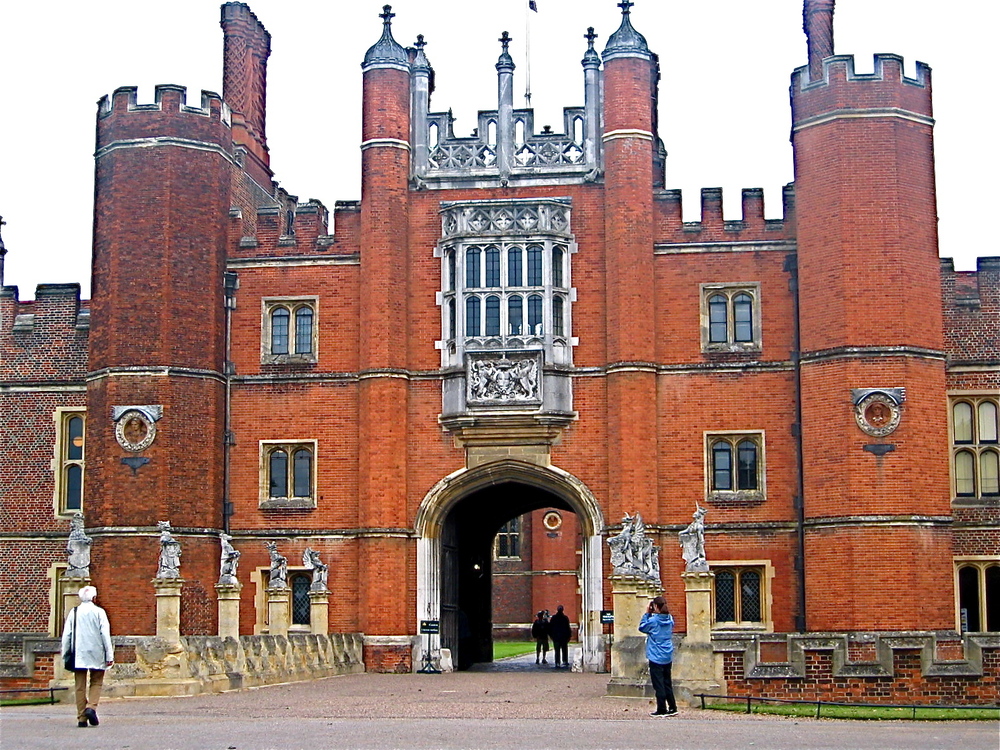
- Elizabethan and Stuart Periods: After Henry VIII, the palace continued to be used by monarchs, including Elizabeth I and the Stuart kings. The palace was the site of many important events, including the Hampton Court Conference in 1604, which attempted to resolve religious differences.
- Baroque Enhancements: In the late 17th century, William III and Mary II commissioned Sir Christopher Wren to expand and modernize the palace. Wren added Baroque elements, including the grand Fountain Court.
- Open to the Public: By the 19th century, Hampton Court Palace had ceased to be a royal residence and was opened to the public. Extensive restoration efforts have been made to preserve its historical significance and architectural beauty.
You May Also Like: 10 Corner Wood Burning Stove Ideas- Price and area needed
What to Do at Hampton Court Palace in 2024
- Explore the State Apartments: Visit the grand State Apartments, including the Tudor kitchens, the Great Hall, and the apartments of Henry VIII. These rooms are filled with historical artifacts and offer a glimpse into the opulence of the Tudor court.
- Hampton Court Maze: Navigate the famous Hampton Court Maze, one of the oldest surviving hedge mazes in the world. It offers a fun and challenging experience for visitors of all ages.
- Historic Reenactments: Watch live historical reenactments and costumed interpreters who bring the history of Hampton Court to life. These performances often include scenes from the lives of Henry VIII and other notable figures.
- Guided Tours: Take a guided tour to learn more about the palace’s rich history, architecture, and the stories of its royal residents. Specialized tours, such as ghost tours and garden tours, are also available.
- Art and Exhibitions: Explore the various art collections and temporary exhibitions on display at the palace. Hampton Court houses a significant collection of art and tapestries.
- Hampton Court Music Festival: Check the schedule for the annual Hampton Court Palace Festival, which features a series of outdoor concerts in the stunning setting of the palace gardens. This event attracts renowned musicians and offers a unique cultural experience.
- Tennis Court and Real Tennis: Visit the historic Royal Tennis Court, where you can watch or even try your hand at the traditional game of Real Tennis, a precursor to modern lawn tennis.
2. Whitby Abbey, North Yorkshire
History
Whitby Abbey, located on the East Cliff overlooking the North Sea, is a historic ruin that has played a significant role in English history.
Founded in 657 AD by King Oswy of Northumbria, the original monastery was a double monastery for both monks and nuns, headed by the notable Abbess Hilda.
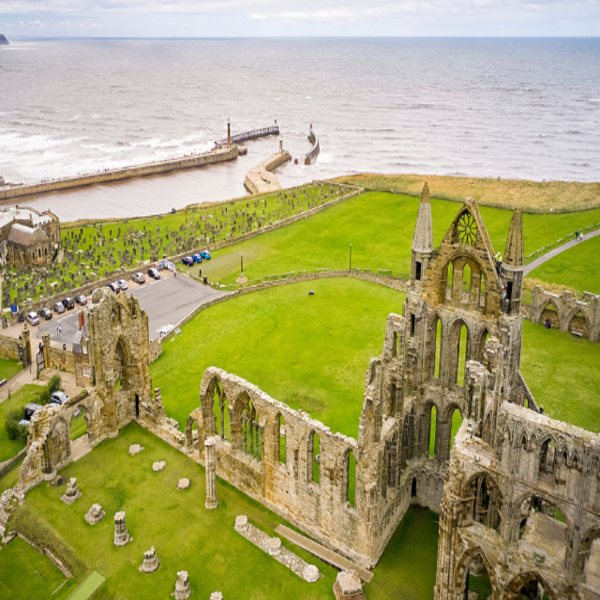
This early establishment was a center for learning and played a pivotal role in the spread of Christianity in the region.
Despite its ruinous state, Whitby Abbey continued to inspire. It famously influenced Bram Stoker’s “Dracula,” adding to its cultural significance.
Today, the hauntingly beautiful remains of the abbey, with their Gothic arches and towering presence, stand as a testament to its rich and varied history.
What to Do at Whitby Abbey in 2024
1. Explore the Ruins:
- Wander through the atmospheric ruins of Whitby Abbey and imagine the grandeur of the past. The dramatic remnants offer a glimpse into medieval architecture and the storied past of this historic site.
2. Visit the Visitor Centre:
- The on-site visitor center provides detailed exhibits about the history of the abbey and the surrounding area. Interactive displays, artifacts, and multimedia presentations make history come alive for visitors of all ages.
3. Attend Special Events:
- Whitby Abbey hosts a variety of events throughout the year. In 2024, look out for historical reenactments, live performances, and themed events, especially around Halloween when the abbey’s connection to “Dracula” is celebrated.
4. Participate in Family Activities:
- Families can enjoy a range of activities designed for children, including treasure hunts, storytelling sessions, and educational workshops. These activities make history engaging and fun for younger visitors.
5. Enjoy the Stunning Views:
- Take in the breathtaking views from the abbey over the town of Whitby and the North Sea. The panoramic scenery is perfect for photography and offers a serene backdrop for reflection.
7. Discover Literary Connections:
- Learn more about Whitby’s literary heritage. Follow in the footsteps of Bram Stoker and visit locations in the town that inspired scenes in “Dracula.” Guided tours often highlight these connections.
3. Margam Castle, Port Talbot
This Margam Castle in Port Talbot, Wales, is a fascinating blend of history and architecture, with a rich past spanning over 4,000 years.
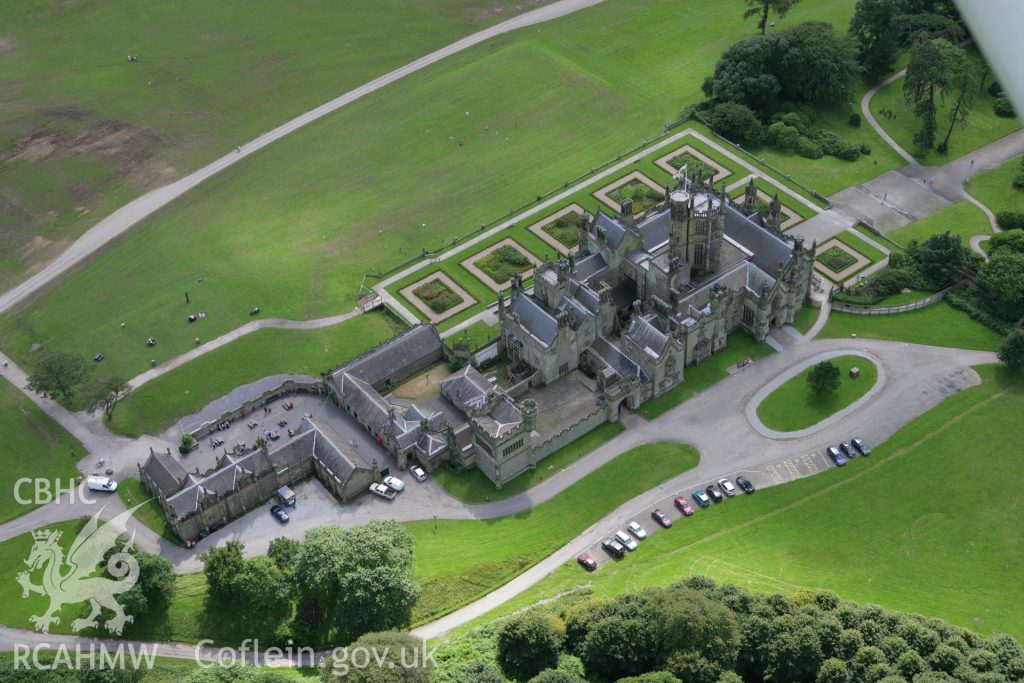
Originally occupied during the Iron Age, the site has seen numerous transformations, from a monastic community to a grand Victorian mansion.
Historical Overview
The Margam estate’s history dates back to prehistoric times, with evidence of settlements from the Bronze Age.
The land was granted to Clairvaux Abbey by Robert, 1st Earl of Gloucester, in 1147, leading to the establishment of Margam Abbey.
Following the Dissolution of the Monasteries in 1536, Sir Rice Mansel acquired the estate, converting it into a grand Tudor mansion.
In the 19th century, Christopher Rice Mansel Talbot, a prominent Welsh industrialist and MP, commissioned the construction of the current Margam Castle.
Built between 1830 and 1840, the castle was designed by Thomas Hopper in a Tudor Gothic style. This period also saw the addition of the Orangery, a massive glasshouse that remains one of the longest in Britain.
Most Related Stories: 5 Most Expensive Hotels in the UK- History and Location
Architectural Highlights
Margam Castle is noted for its Tudor Gothic architecture, characterized by its grandiose and romantic style.
Key architectural features include intricate stone carvings, expansive windows, and an impressive staircase hall.
The castle is a Grade I listed building, highlighting its national significance.
The grounds also feature elements from the estate’s earlier history, including remnants of the original Margam Abbey and medieval structures.
The Orangery, designed by Anthony Keck, adds to the estate’s grandeur, showcasing the opulence of the 18th-century garden design.
Modern Era and Restoration
The castle passed through several hands in the 20th century, including being used by the American army during World War II.
After a period of decline and a significant fire in 1977, restoration efforts began in earnest.
Today, the estate is managed by Neath Port Talbot County Borough Council and is open to the public, offering a glimpse into its storied past and architectural splendor.
4. Cawdor Castle, Nairnshire
Early Beginnings and Construction
Cawdor Castle, situated in Nairnshire, Scotland, is a historical gem with origins tracing back to the late 14th century.
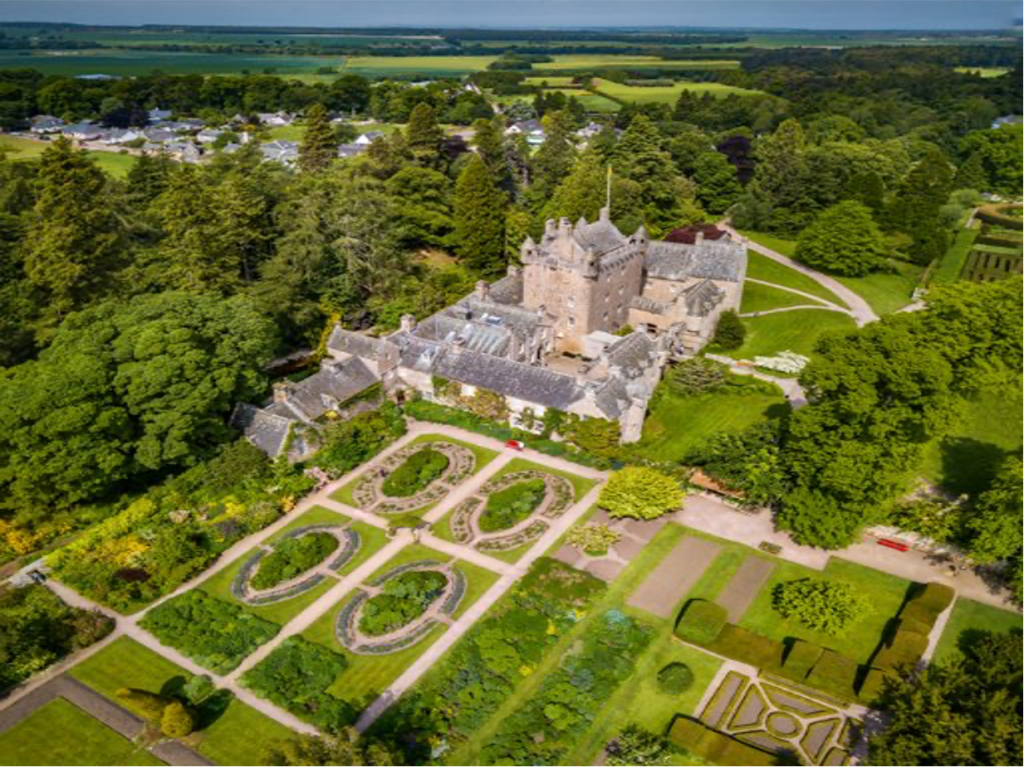
The castle was initially constructed around a legendary holly tree, which, according to local folklore, was chosen by a donkey carrying a coffer of gold as instructed in a dream.
This medieval tower house was later expanded in the 15th century by the Thanes of Cawdor .
Campbell Family Era
In 1510, Muriel Calder, the heiress of the Calder family, married Sir John Campbell, bringing the castle into the Campbell family lineage.
Over the centuries, the Campbells made numerous modifications and extensions to the castle.
Notable expansions include the addition of a garden in 1635 and further developments in the 18th century, which saw the establishment of extensive woodlands and a walled flower garden.
Shakespearean Connection
Cawdor Castle is famously linked to Shakespeare’s play “Macbeth,” where the title character is given the title Thane of Cawdor.
However, this association is more literary than historical, as the real Macbeth lived several centuries before the castle’s construction.
Despite this, the castle embraces its Shakespearean lore, enhancing its mystical and historical allure.
Visitor Experience
Visitors to Cawdor Castle can explore its beautifully maintained gardens, including the Walled Garden, Flower Garden, and Wild Garden, each with its unique history and charm.
The castle grounds also feature Cawdor Big Wood, a notable forest area home to ancient trees and diverse plant species.
Additionally, the castle offers a variety of activities such as guided tours, a nine-hole golf course, and seasonal events like open-air theatre performances and Christmas markets.
Preservation Efforts
Despite its age, Cawdor Castle has been remarkably well-preserved, having never been attacked.
It continues to stand as a testament to Scotland’s rich architectural and cultural heritage, welcoming visitors from around the world to immerse themselves in its historical narrative and stunning natural surroundings.
You May Read: Places to Visit North Wales: A Comprehensive Guide
5. Blickling Estate, Norfolk
History
Ancient Origins
The Blickling Estate in Norfolk, England, is a magnificent country house with a rich and varied history.
The estate dates back to the Anglo-Saxon period when it was part of a large agricultural settlement.
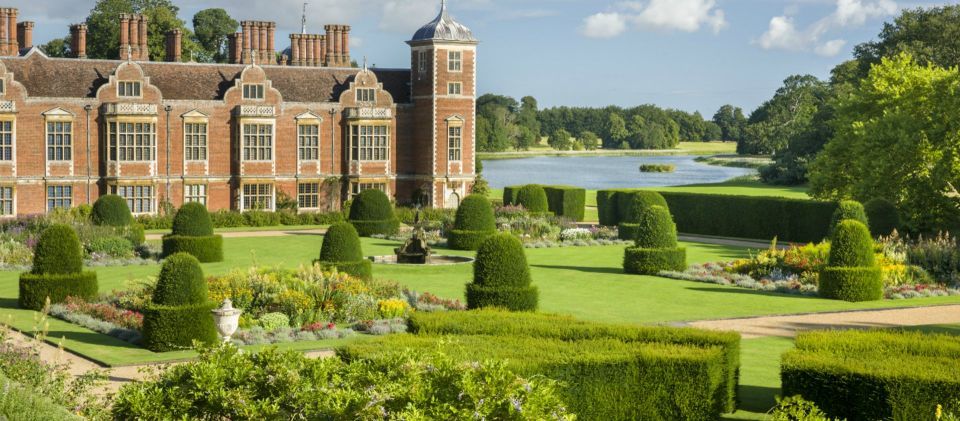
Historical records indicate that it was once owned by Harold Godwinson, who became King Harold II before the Norman Conquest in 1066.
Medieval Period
After the Norman Conquest, the estate changed hands several times. In the medieval period, it was held by the Boleyn family. Sir Geoffrey Boleyn, a wealthy London merchant, purchased the property in the mid-15th century.
His grandson, Thomas Boleyn, later became the father of Anne Boleyn, the second wife of King Henry VIII and mother of Queen Elizabeth I. Although Anne Boleyn’s exact birthplace remains a subject of historical debate, many believe she was born at Blickling Hall around 1501.
The Jacobean Mansion
The current Blickling Hall was built in 1616 by Sir Henry Hobart, a prominent lawyer and politician.
The Jacobean mansion, designed by architect Robert Lyminge, is renowned for its exquisite architecture, featuring red brick with stone dressings, gabled roofs, and towering chimneys.
The interiors boast fine woodwork, elaborate plaster ceilings, and an impressive collection of paintings and tapestries.
18th and 19th Centuries
Throughout the 18th and 19th centuries, Blickling Hall remained an important social hub, hosting numerous grand events and gatherings.
The estate saw various modifications and improvements, including the expansion of its gardens and the creation of the picturesque lake.
The last private owner, Philip Kerr, 11th Marquess of Lothian, played a significant role in its preservation. Upon his death in 1940, he bequeathed the estate to the National Trust, ensuring its protection for future generations.
World War II
During World War II, Blickling Hall served as a billet for the Royal Air Force, providing a base for airmen who played a crucial role in the Battle of Britain.
The estate’s historic significance and architectural splendor were thus intertwined with the nation’s wartime efforts.
Modern Day
Today, Blickling Estate is a popular tourist destination, attracting visitors from around the world. It stands as a testament to England’s rich history, offering a glimpse into the lives of its former inhabitants and the architectural grandeur of past centuries.
What to Do at Blickling Estate in 2024
1. Explore the Jacobean Mansion Visitors can tour the stunning Jacobean mansion, admiring its exquisite architecture and rich interiors. Highlights include the Long Gallery, with its impressive collection of books, and the Great Hall, featuring magnificent plaster ceilings and historic portraits.
2. Attend Special Events and Activities In 2024, Blickling Estate will host a variety of events, including historical reenactments, outdoor theatre performances, and seasonal celebrations. Check the estate’s calendar for events such as the Spring Garden Festival and the Autumn Craft Fair.
3. Visit the RAF Oulton Museum The estate’s RAF Oulton Museum provides a fascinating insight into the role of Blickling Hall during World War II. The museum features exhibits on the airmen who were stationed there and the impact of the war on the local community.
4. Discover the History of the Estate Guided tours and audio guides are available to provide in-depth information about the estate’s history, architecture, and former residents. The knowledgeable staff and volunteers are always on hand to answer questions and share stories.
5. Participate in Conservation Activities Blickling Estate is committed to conservation and sustainability. Visitors can learn about the estate’s conservation efforts and even participate in volunteer activities to help preserve its natural and historical heritage.
6. Stay Overnight For those wanting to extend their visit, the estate offers unique accommodation options. Staying overnight allows guests to experience the tranquility of the estate after hours and enjoy exclusive access to certain areas.
Blickling Estate offers a blend of history, nature, and culture, making it an enriching and memorable destination for visitors in 2024.
6. Mary King’s Close, Edinburgh
History
Mary King’s Close, located beneath the Royal Mile in Edinburgh, is a fascinating historical site steeped in mystery and legend. Its origins date back to the 16th century when it was a bustling street inhabited by merchants and craftsmen.
Named after Mary King, a prominent businesswoman who lived on the Close in the 17th century, this area has witnessed centuries of Edinburgh’s history.
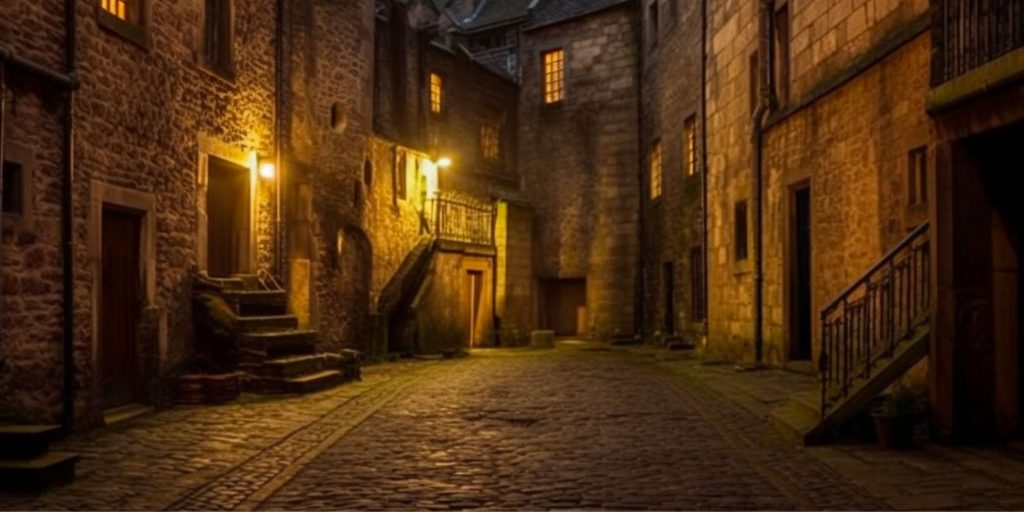
The Close gained notoriety during the plague outbreaks of the 17th century. Stories of the plague victims being quarantined and sealed off within the Close have contributed to its eerie reputation.
Over time, urban legends and ghost stories flourished, cementing Mary King’s Close as one of Edinburgh’s most haunted locations.
In the mid-18th century, the Close was partially demolished and buried during the construction of the Royal Exchange, now known as the City Chambers.
For years, it remained hidden and largely forgotten until the late 20th century, when it was excavated and opened to the public. Today, Mary King’s Close offers a unique glimpse into Edinburgh’s past, showcasing the preserved remnants of a once-thriving medieval street.
What to Do at Mary King’s Close in 2024
1. Guided Tours
- The Real Mary King’s Close Tour: Immerse yourself in the history and legends of Mary King’s Close with an expert guide. These tours explore the underground streets and rooms, providing fascinating insights into the lives of past residents and the tales of hauntings and plague.
2. Themed Events and Seasonal Activities
- Plague Doctor Experience: Participate in an interactive experience where actors portray historical figures like plague doctors, offering a deeper understanding of the medical practices and challenges of the 17th century.
- Ghost Tours: For thrill-seekers, ghost tours delve into the supernatural tales associated with Mary King’s Close. These tours are particularly popular around Halloween and other spooky times of the year.
3. Educational Workshops
- Historical Workshops: Engage in educational workshops that delve into the architectural, social, and cultural aspects of medieval Edinburgh. These sessions are perfect for history enthusiasts and school groups.
4. Exhibitions
- Plague Exhibit: Visit the dedicated exhibit on the history of the plague in Edinburgh, featuring artifacts, documents, and multimedia displays that bring this dark chapter of history to life.
- Archaeological Discoveries: Explore exhibitions showcasing recent archaeological finds from the Close, shedding light on the daily lives of its former inhabitants.
5. Special Events and Performances
- Historical Reenactments: Witness live reenactments of significant historical events that took place in Mary King’s Close, bringing the past to life in an immersive way.
- Seasonal Festivals: Attend seasonal festivals that celebrate Edinburgh’s rich cultural heritage, with performances, food stalls, and traditional crafts.
6. Shopping and Souvenirs
- Gift Shop: Before you leave, visit the gift shop to purchase unique souvenirs, books, and memorabilia related to Mary King’s Close and Edinburgh’s history.
Visiting Information
- Opening Hours: Mary King’s Close is open year-round, with extended hours during peak tourist seasons. Check their official website for the latest opening times and tour schedules.
- Tickets: It’s recommended to book tickets in advance, especially during holidays and weekends, as tours can fill up quickly.
- Accessibility: Due to the historic nature of the site, some areas may have limited accessibility. Contact the venue in advance to discuss any specific needs or accommodations.
Visiting Mary King’s Close in 2024 promises a blend of history, mystery, and entertainment, making it a must-see attraction for anyone interested in the rich tapestry of Edinburgh’s past.
7. Bodmin Moor, Cornwall
History
Bodmin Moor, located in Cornwall, England, is a granite moorland covering over 200 square kilometers. This area has a rich historical and archaeological significance dating back to prehistoric times. Here are some key points in its history:
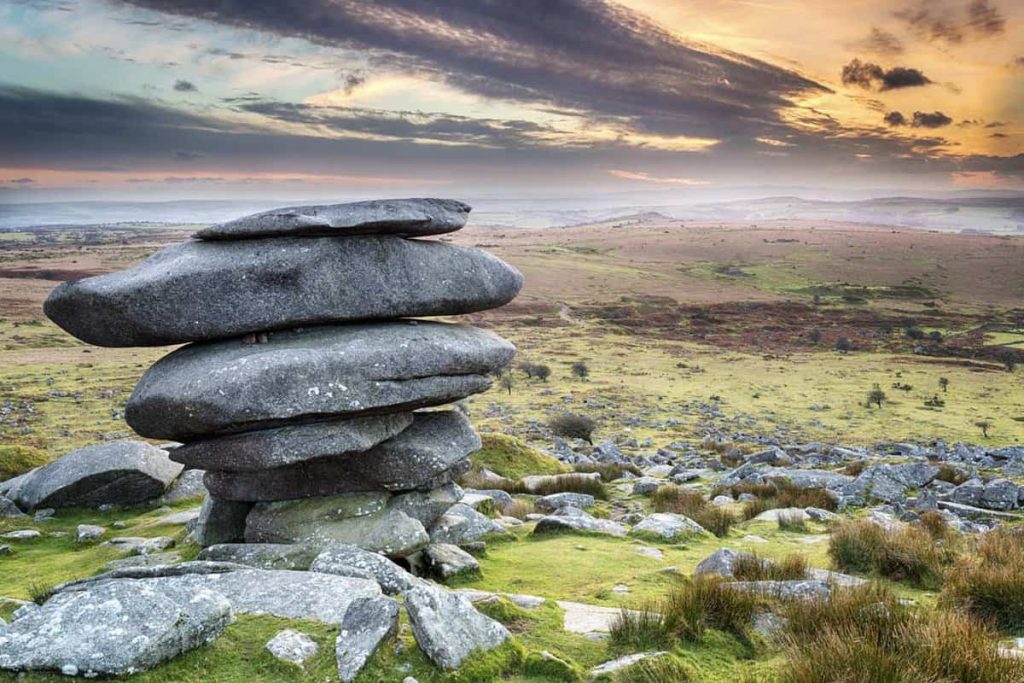
- Prehistoric Era: Bodmin Moor is dotted with numerous prehistoric monuments, including stone circles, burial mounds, and standing stones. The most famous of these is the Cheesewring, a natural rock formation shaped by centuries of weathering. Another notable site is the Hurlers, a group of three stone circles believed to date back to the Bronze Age.
- Medieval Period: During medieval times, Bodmin Moor was used for farming and tin mining. The moorland was dotted with small hamlets and farmsteads, many of which still exist today. The moor also has numerous remnants of medieval field systems and farm buildings.
- Industrial Revolution: In the 18th and 19th centuries, Bodmin Moor was a significant area for mining, particularly for tin and copper. The remains of mines, engine houses, and other industrial buildings can still be seen, providing a glimpse into the region’s industrial past.
What to Do in Bodmin Moor in 2024
Bodmin Moor offers a variety of activities and attractions for visitors. Here are some of the top things to do:
- Hiking and Walking: Bodmin Moor has numerous walking trails that cater to all levels of fitness. Popular routes include the ascent of Brown Willy, the highest point in Cornwall, and Rough Tor, another prominent peak. These trails offer stunning views of the moorland and beyond.
- Historical Sites: Explore the many historical sites scattered across the moor, such as the Cheesewring, the Hurlers stone circles, and the remains of the old tin mines. The ancient settlements and medieval field systems provide a fascinating insight into the area’s past.
- Visit Jamaica Inn: This famous coaching inn, made famous by Daphne du Maurier’s novel of the same name, is located on the edge of Bodmin Moor. It offers a museum, a restaurant, and cozy accommodation, making it a perfect stop for visitors.
- Wildlife Watching: Bodmin Moor is home to a diverse range of wildlife, including birds of prey, deer, and wild ponies. It’s an excellent place for birdwatching and photography.
- Cycling: The moor offers various cycling routes that allow you to explore its rugged terrain. There are options for both leisurely rides and more challenging mountain biking trails.
- Stargazing: Due to its remote location and lack of light pollution, Bodmin Moor is an excellent spot for stargazing. On clear nights, you can see a stunning display of stars and, occasionally, the Milky Way.
- Bodmin & Wenford Railway: Take a ride on Cornwall’s only full-size heritage railway. The steam trains provide a nostalgic journey through the beautiful countryside surrounding Bodmin Moor.
Bodmin Moor offers a rich combination of natural beauty, historical significance, and outdoor activities, making it a must-visit destination in Cornwall.
8. Pluckley, Kent
History
Pluckley is a small village located in the county of Kent, England, known for its picturesque scenery and historical significance. Here are some key points in its history:
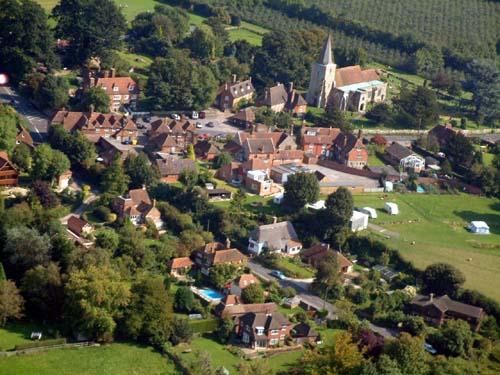
- Early History: Pluckley has a history that stretches back to Saxon times. The name “Pluckley” is believed to be derived from the Old English word “plocc,” meaning a place of protection or refuge.
- Medieval Period: During the medieval period, Pluckley developed as an agricultural community. The village is mentioned in the Domesday Book of 1086, which recorded the landholdings and resources of England at the time.
- St. Nicholas Church: One of the most prominent historical landmarks in Pluckley is St. Nicholas Church. The church dates back to the 12th century and features beautiful architecture and historical artifacts. It has been a central part of the community for centuries.
- Smarden Charter: In 1237, King Henry III granted a charter to the nearby village of Smarden, which included Pluckley. This charter allowed for the holding of markets and fairs, boosting the local economy and trade.
- Haunted Reputation: Pluckley is perhaps best known for its reputation as the “most haunted village in England.” This reputation was cemented by a 1989 entry in the Guinness Book of Records, which listed at least 12 distinct ghosts associated with the village, including the famous Red Lady and the Watercress Woman.
- Agricultural Heritage: The village has a rich agricultural heritage, with farming being a central part of the local economy for centuries. Traditional farming practices and rural life have shaped Pluckley’s character.
What to Do in Pluckley in 2024
Pluckley offers a variety of activities and attractions for visitors. Here are some of the top things to do:
- Ghost Tours: Given its reputation as the most haunted village in England, Pluckley offers numerous ghost tours. These tours take you to the haunted sites around the village, including the Screaming Woods, St. Nicholas Church, and the old brickworks.
- St. Nicholas Church: Visit the historic St. Nicholas Church to admire its architecture and learn about its history. The churchyard is also said to be haunted, adding an element of intrigue to your visit.
- Walking and Hiking: Pluckley is surrounded by beautiful countryside, making it an excellent location for walking and hiking. Explore the scenic trails, such as the walk to the Pinnock, which offers stunning views of the Kent countryside.
- Local Pubs: Enjoy a meal or a drink at one of Pluckley’s traditional pubs, such as The Black Horse or The Dering Arms. These pubs offer a cozy atmosphere and a taste of local hospitality.
- Pluckley Brickworks: Visit the remains of the old brickworks, which are steeped in history and local lore. The site is also said to be haunted, adding to the village’s spooky charm.
- Pluckley Farm Shop: Stop by the Pluckley Farm Shop to purchase local produce, including fresh fruits, vegetables, and homemade goods. This is a great way to support local farmers and enjoy the flavors of Kent.
- Dering Woods (Screaming Woods): Explore the infamous Dering Woods, known locally as the Screaming Woods due to reports of strange noises and paranormal activity. It’s a fascinating place for both nature lovers and those interested in the supernatural.
Pluckley offers a unique blend of history, natural beauty, and paranormal intrigue, making it a fascinating destination to explore in 2024.
9. Craig y Nos Castle
History
Craig y Nos Castle, located in the Upper Swansea Valley in Powys, Wales, is a historic building with a rich and fascinating past. Here are some key points in its history:
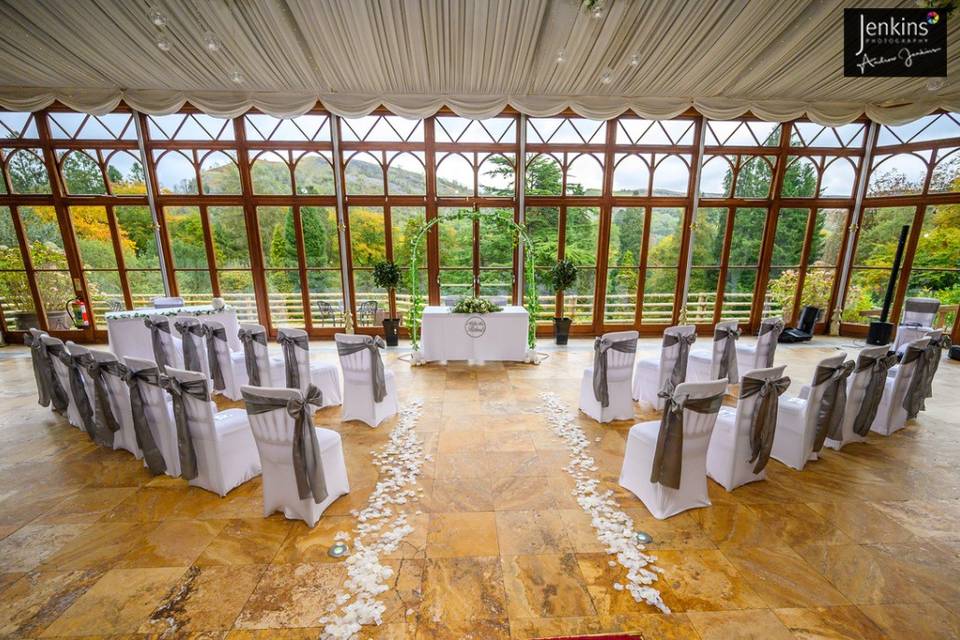
- Construction and Early Years: The castle was built in 1843 by Captain Rice Davies Powell. Initially, it served as a residential property. The architecture is primarily in the Gothic Revival style, which was popular in the 19th century.
- Adelina Patti’s Residence: In 1878, the famous Italian opera singer Adelina Patti purchased Craig y Nos Castle. She made significant modifications to the castle, including the addition of a theater that could seat up to 150 people. Patti’s presence brought glamour and attention to the castle, as she was one of the most celebrated sopranos of her time.
- The Patti Theatre: The theater, which is still present today, is a significant historical feature of the castle. It was used for private performances and gatherings, attracting notable guests from the arts and society.
- Hospital Use: During the 1920s, after Patti died in 1919, the castle was sold and eventually became a hospital for tuberculosis patients. It served this function until the mid-20th century, helping many during a critical time when tuberculosis was a major health issue.
- Restoration and Modern Use: After its time as a hospital, the castle fell into disrepair. It was later purchased and restored, transforming it into a hotel and event venue. The restoration preserved many of its historical features, allowing guests to experience its rich heritage.
What to Do at Craig y Nos Castle in 2024
Craig y Nos Castle offers a variety of activities and attractions for visitors. Here are some of the top things to do:
- Guided Tours: Take a guided tour of the castle to learn about its fascinating history, architecture, and famous residents. The tours often include a visit to the Patti Theatre and other historically significant rooms.
- Stay Overnight: Experience the charm and luxury of staying in a historic castle. The hotel offers a range of rooms and suites, each with unique features and décor.
- The Patti Theatre: Attend a performance or event in the historic Patti Theatre. The theater hosts various cultural and entertainment events throughout the year, providing a unique experience in a historic setting.
- Walking and Hiking: Explore the beautiful grounds and surrounding Brecon Beacons National Park. The area offers numerous walking and hiking trails with stunning views of the Welsh countryside.
- Weddings and Events: Craig y Nos Castle is a popular venue for weddings, conferences, and other special events. Its historic charm and beautiful setting make it an ideal location for memorable occasions.
- Ghost Tours: Given its long history and past as a hospital, Craig y Nos Castle is reputed to be haunted. Join a ghost tour to explore the spooky side of the castle and hear tales of its resident spirits.
- Dining: Enjoy a meal at the castle’s restaurant, which offers a range of dishes made from locally sourced ingredients. The restaurant provides a charming atmosphere with views of the castle grounds.
- Spa and Relaxation: Unwind and relax at the castle’s spa facilities. Treat yourself to a massage or other wellness treatments in a serene and historic setting.
- Photography: Capture the beauty and history of Craig y Nos Castle through photography. The castle’s architecture, interiors, and surrounding landscapes provide excellent opportunities for stunning photos.
- Local Attractions: Use the castle as a base to explore the wider area of Powys and the Brecon Beacons. Visit nearby attractions such as the National Showcaves Centre for Wales, Dan-yr-Ogof Caves, and the charming town of Brecon.
Craig y Nos Castle offers a unique blend of historical intrigue, cultural experiences, and natural beauty, making it a must-visit destination in 2024.
10. Drovers Inn
History
The Drovers Inn, located in Inverarnan, Scotland, is one of the oldest inns in the country, with a history dating back to 1705. Here are some key points in its history:
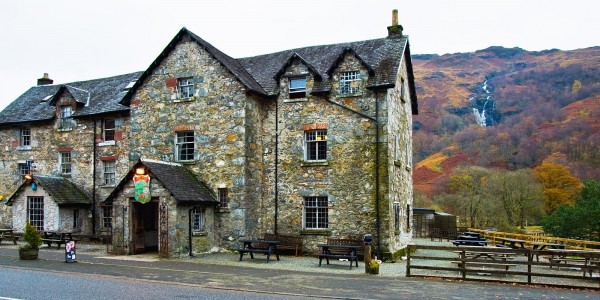
- Origins and Early Years: Established in 1705, The Drovers Inn was built to serve the drovers who herded their cattle from the Highlands to the markets in the south. The inn provided food, drink, and lodging for these drovers and their animals.
- Strategic Location: Its location near Loch Lomond made it a crucial stop for travelers and drovers alike. The route was essential for trade and communication between the Highlands and Lowlands of Scotland.
- Haunted Reputation: Over the centuries, The Drovers Inn has gained a reputation for being one of the most haunted places in Scotland. Stories of ghostly apparitions and strange occurrences have been reported by visitors and staff, adding to its mystique and allure.
- Historic Preservation: The inn has retained much of its original charm and character, with stone walls, wooden beams, and a cozy atmosphere that transports visitors back in time. It remains a popular destination for those seeking a glimpse into Scotland’s past.
What to Do at The Drovers Inn in 2024
- Stay Overnight: Experience the rustic charm of The Drovers Inn by booking a room. The inn offers a range of accommodations, from traditional rooms with period features to more modern comforts, ensuring a unique stay.
- Enjoy Traditional Scottish Food and Drink: The inn’s restaurant and bar serve hearty Scottish fare, including haggis, black pudding, and locally sourced meats. Enjoy a drink by the roaring fire and soak in the historic ambiance.
- Ghost Tours: Join a ghost tour to hear the eerie tales and legends associated with The Drovers Inn. These tours provide a thrilling experience, exploring the haunted history of the inn.
- Hiking and Outdoor Activities: Use The Drovers Inn as a base to explore the surrounding Loch Lomond and The Trossachs National Park. There are numerous hiking and walking trails, including the famous West Highland Way, which passes nearby.
- Live Music and Events: Check the inn’s schedule for live music and events. Traditional Scottish music nights are a highlight, offering a lively and authentic cultural experience.
- Fishing and Boating: Loch Lomond is a great place for fishing and boating. Rent equipment or join a guided tour to enjoy these activities on the beautiful loch.
- Explore Nearby Attractions: Visit nearby attractions such as the Falls of Falloch, a stunning waterfall located just a short drive from the inn, or the charming village of Crianlarich.
- Photography: The picturesque setting of The Drovers Inn, with its historic architecture and scenic surroundings, makes it an excellent location for photography. Capture the essence of Scotland’s natural beauty and historic charm.
The Drovers Inn offers a blend of historic intrigue, traditional Scottish hospitality, and natural beauty, making it a compelling destination to visit in 2024.
11. Chillingham Castle
History
Chillingham Castle, located in Northumberland, England, is renowned for its rich history and reputed hauntings. Here are some key points in its history:
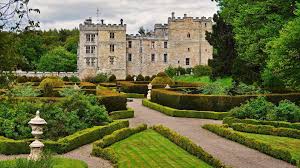
- Medieval Origins: Chillingham Castle dates back to the 12th century and was originally a monastery.
- Royal Connections: The castle has hosted several English monarchs, including King Edward I, who used it as a base during his campaigns against the Scots in the late 13th century. The castle’s strategic location near the Scottish border made it a key defensive stronghold.
- The Grey Family: The castle has been owned by the Grey family for most of its history. The family made significant modifications and expansions over the centuries, transforming it into a more comfortable residence while retaining its defensive features.
- Ghosts and Legends: Chillingham Castle is famously known as one of the most haunted castles in England. The castle’s eerie atmosphere and paranormal activity have made it a popular destination for ghost hunters.
- Restoration: In the 20th century, the castle fell into disrepair but was eventually restored by Sir Humphry Wakefield, a descendant of the Grey family. His efforts have preserved the castle’s historical integrity and opened it to the public as a tourist attraction.
What to Do at Chillingham Castle in 2024
- Castle Tours: Take a guided or self-guided tour of the castle to explore its historic rooms, dungeons, and towers. Learn about the castle’s medieval origins, royal connections, and intriguing history.
- Ghost Tours: Join a ghost tour to hear the spine-chilling tales of Chillingham Castle’s hauntings. These tours are a must for those interested in the paranormal and provide a thrilling experience as you explore the castle’s haunted areas.
- Gardens and Grounds: Stroll through the beautifully landscaped gardens and grounds of Chillingham Castle. The gardens feature a variety of plants, flowers, and ancient trees, offering a peaceful and picturesque setting.
- Wild Cattle Park: Visit the nearby Chillingham Wild Cattle Park to see the rare and ancient breed of wild white cattle. These cattle have roamed the park for centuries and are believed to be the last remaining herd of their kind in the world.
- Historical Reenactments: Check the castle’s event schedule for historical reenactments and medieval-themed events. These events provide an immersive experience, allowing visitors to step back in time and witness historical battles and daily life in the medieval period.
- Accommodation: Spend a night at the castle by booking one of the self-catering apartments or suites. Staying overnight offers a unique opportunity to experience the castle’s atmosphere after dark and possibly encounter its resident ghosts.
- Dining: Enjoy a meal at the castle’s tea room or restaurant, which offers a selection of traditional English dishes and refreshments.
- Photography: Capture the beauty and history of Chillingham Castle through photography. The castle’s architecture, interiors, and scenic surroundings provide excellent opportunities for stunning photos.
- Educational Programs: Participate in educational programs and workshops offered at the castle. These programs cover various topics, including history, archaeology, and conservation, providing a deeper understanding of the castle and its significance.
Chillingham Castle offers a blend of historical exploration, ghostly encounters, and natural beauty, making it a captivating destination to visit in 2024.
12. St Briavels Castle, Gloucestershire
History
St Briavels Castle, located in the Forest of Dean, Gloucestershire, is a medieval castle with a rich and varied history. Here are some key points in its history:
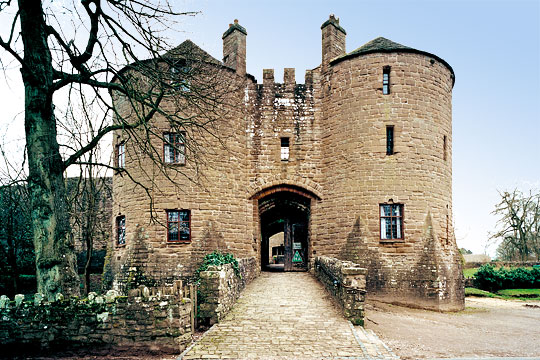
- Norman Origins: St Briavels Castle was originally built as a Norman motte-and-bailey castle in the early 12th century, around 1130, by the instruction of King Henry I. It served as a royal administrative center and a hunting lodge.
- Royal Connections: The castle was strategically important due to its proximity to the Welsh border.
- Administrative Role: Throughout the 13th century, St Briavels Castle became the administrative center for the Forest of Dean. It housed the royal forest court and served as a prison for offenders against forest law.
- Decline and Restoration: By the 17th century, the castle had fallen into disrepair. However, it was later restored and used for various purposes, including a private residence and a youth hostel.
- Architectural Features: The castle retains many of its original features, including a 12th-century gatehouse, a well-preserved curtain wall, and the Great Hall. These features offer a glimpse into the medieval architecture and design.
What to Do at St Briavels Castle in 2024
- Castle Tours: Take a guided or self-guided tour of the castle to explore its historic rooms, including the Great Hall, the chapel, and the dungeon. Learn about its Norman origins, royal connections, and its role in medieval administration.
- Overnight Stay: Experience a unique overnight stay at the castle, which now operates as a YHA youth hostel. Staying within the ancient walls offers a rare opportunity to immerse yourself in the castle’s history.
- Medieval Banquets: Participate in a medieval banquet event if available. These events often include period costumes, traditional food, and entertainment, providing an immersive historical experience.
- Ghost Tours: Join a ghost tour to hear the eerie tales and legends associated with St Briavels Castle. The castle’s long history and former use as a prison contribute to its haunted reputation.
- Explore the Forest of Dean: Use the castle as a base to explore the surrounding Forest of Dean, known for its natural beauty and outdoor activities. Enjoy walking, hiking, or cycling through the scenic trails.
- Local Events and Festivals: Check for local events and festivals that may be taking place during your visit. These can include historical reenactments, local fairs, and cultural events celebrating the region’s heritage.
- Educational Workshops: Participate in educational workshops and activities offered at the castle. These programs often cover topics such as medieval history, archaeology, and traditional crafts.
- Photography: Capture the historic charm and scenic beauty of St Briavels Castle and its surroundings. The castle’s architecture and the lush landscape of the Forest of Dean provide excellent photography opportunities.
- Visit Nearby Attractions: Explore nearby attractions such as Clearwell Caves, an ancient iron mining site, and Puzzlewood, a unique woodland area with winding pathways and rock formations.
- Dining: Enjoy a meal at the castle’s on-site cafe or head to one of the local pubs or restaurants in the village of St Briavels, which offer traditional English cuisine and a cozy atmosphere.
St Briavels Castle offers a combination of historical exploration, unique accommodations, and outdoor activities, making it an interesting and enjoyable destination to visit in 2024.
13. Pilchard Inn, Devon
History
The Pilchard Inn, located on Burgh Island off the coast of South Devon, has a rich and storied history dating back to the 14th century. Here are some key points in its history:

- 14th Century Origins: The Pilchard Inn was established in 1336, serving as a haven for fishermen and smugglers. The inn takes its name from the pilchard fish, which were abundant in the area and a staple of the local fishing industry.
- Smugglers’ Haven: During the 18th and 19th centuries, the Pilchard Inn was a popular spot for smugglers due to its remote location on Burgh Island. The inn’s secluded position made it an ideal place to hide contraband goods.
- Famous Visitors: The inn has hosted several famous visitors over the centuries. Notably, it was a favorite haunt of the author Agatha Christie, who was inspired by the island’s isolation and used it as the setting for her novel “Evil Under the Sun.”
- Historic Charm: Despite modern renovations, the Pilchard Inn retains much of its historic charm, with its old stone walls, wooden beams, and cozy interior offering a glimpse into its past.
What to Do at the Pilchard Inn in 2024
- Enjoy a Meal or Drink: Visit the Pilchard Inn to enjoy a meal or drink in a historic setting. The inn offers traditional pub fare, including fresh seafood, and a selection of local ales. The cozy atmosphere and stunning views of the sea add to the experience.
- Stay Overnight: Book a stay at the Burgh Island Hotel, which owns the Pilchard Inn. The hotel offers luxurious accommodations with Art Deco styling and access to the inn, providing a unique and memorable experience.
- Explore Burgh Island: Take a walk around Burgh Island, accessible at low tide via a causeway or by sea tractor at high tide. The island offers scenic views, a rugged coastline, and the chance to explore its natural beauty.
- Beach Activities: Enjoy the nearby beaches, such as Bigbury-on-Sea, which offers a range of activities including swimming, sunbathing, and water sports. The tidal causeway connecting the beach to Burgh Island is a unique feature to explore.
- Agatha Christie Connection: For fans of Agatha Christie, visit the locations that inspired her works. The Burgh Island Hotel and Pilchard Inn offer insights into the author’s life and inspiration for her novels.
- Historical Tours: Check for any guided historical tours of Burgh Island and the Pilchard Inn. These tours often provide fascinating details about the inn’s past, including its role in the local fishing industry and smuggling activities.
- Photography: Capture the picturesque scenery of Burgh Island and the historic charm of the Pilchard Inn. The island’s unique landscape and the inn’s ancient architecture make for excellent photo opportunities.
- Local Events: Look out for local events and festivals that may be taking place during your visit. These can include cultural events, live music, and seasonal celebrations that offer a taste of local life and traditions.
The Pilchard Inn offers a blend of historical intrigue, scenic beauty, and coastal charm, making it a must-visit destination in Devon for 2024.
14. Stag Inn, Hastings
History
The Stag Inn, located in the Old Town of Hastings, East Sussex, is one of the oldest pubs in the town, with a history dating back to the 16th century. Here are some key points in its history:

- 16th Century Origins: The Stag Inn was established in the 16th century, serving as a public house for the local community and travelers. Its exact founding date is not well-documented, but its long history is evident in its architecture and historical records.
- Smuggling Era: Like many coastal inns in southern England, the Stag Inn was associated with smuggling activities during the 18th and 19th centuries. The inn’s location near the coast made it a convenient spot for smugglers to hide contraband goods.
- Historical Architecture: The Stag Inn retains much of its original character, with features such as wooden beams, stone floors, and a cozy fireplace. The building’s historic charm attracts visitors interested in its past.
- Community Hub: Throughout its history, the Stag Inn has been a central part of the Hastings community, serving as a meeting place for locals and visitors alike. It has hosted various events, from local meetings to social gatherings.
What to Do at the Stag Inn in 2024
- Enjoy Traditional Pub Fare: Visit the Stag Inn to enjoy a meal or drink in a historic setting. The pub offers a range of traditional English dishes, local ales, and a warm, welcoming atmosphere.
- Live Music and Events: Check the inn’s schedule for live music performances and events. The Stag Inn regularly hosts local musicians and bands, providing a lively and entertaining experience.
- Historical Tours: Explore the history of the Stag Inn and the Old Town of Hastings by taking a historical walking tour. These tours often include stops at notable landmarks and provide insights into the area’s rich past.
- Explore Hastings Old Town: Use the Stag Inn as a base to explore the charming Hastings Old Town. Wander through its narrow streets, visit antique shops, art galleries, and enjoy the unique character of this historic area.
- Hastings Castle: Visit the nearby Hastings Castle, which dates back to the Norman Conquest. The castle ruins offer panoramic views of the town and the English Channel, and there’s an informative visitor center.
- Hastings Fishermen’s Museum: Learn about the town’s maritime history at the Hastings Fishermen’s Museum. The museum showcases the fishing heritage of Hastings and features exhibits on traditional fishing techniques and local history.
- Hastings Contemporary: Art enthusiasts can visit Hastings Contemporary, a modern art gallery located on the seafront. The gallery hosts a variety of contemporary art exhibitions and events.
- Coastal Walks: Enjoy the scenic coastal walks around Hastings. The nearby Hastings Country Park offers beautiful trails with stunning views of the coastline and the English Channel.
- Local Festivals: Check for local festivals and events happening in Hastings during your visit. Events such as the Hastings Old Town Carnival Week and the Hastings Seafood & Wine Festival offer a taste of local culture and cuisine.
- Photography: Capture the historic charm and scenic beauty of the Stag Inn and Hastings Old Town. The inn’s architecture and the picturesque surroundings make for excellent photo opportunities.
The Stag Inn offers a blend of historical intrigue, community spirit, and cultural activities, making it a delightful destination to visit in 2024.
15. Adam and Eve, Norwich
History
The Adam and Eve pub, located in Norwich, Norfolk, is reputed to be the oldest pub in the city. Here are some key points in its history:
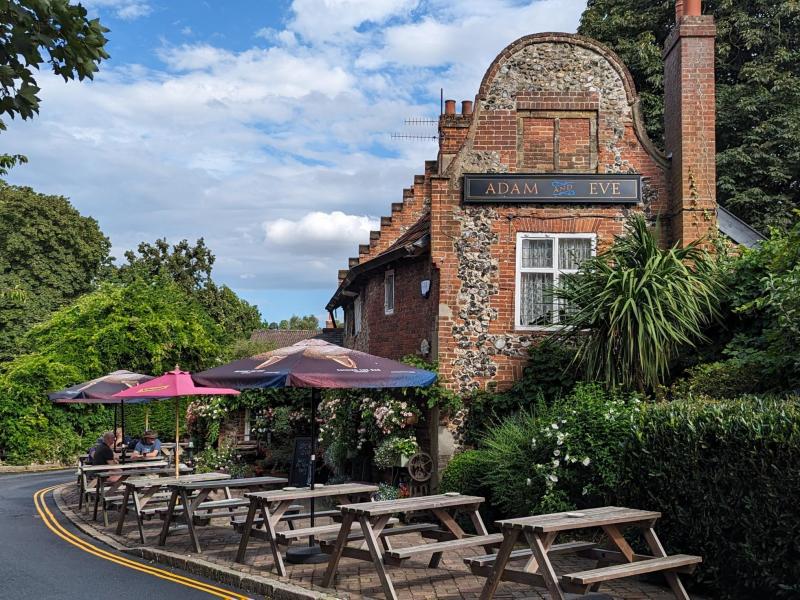
- 13th Century Origins: The Adam and Eve dates back to 1249 when it was established to serve laborers building the nearby Norwich Cathedral. It initially functioned as an alehouse, providing food and drink to the workers.
- Medieval Period: Over the centuries, Adam and Eve became a popular spot for locals and travelers alike. The building has seen numerous renovations but has retained much of its medieval charm.
- Historic Features: The pub retains many historical features, including its ancient beams and traditional decor, providing a glimpse into its long and storied past.
- Community Hub: Throughout its history, Adam and Eve has been a central part of the Norwich community, serving as a meeting place for various social and cultural activities.
What to Do at Adam and Eve in 2024
- Enjoy Traditional Pub Fare: Visit the Adam and Eve to enjoy a meal or drink in a historic setting. The pub offers a range of traditional English dishes and local ales. The cozy atmosphere and historic decor make it a unique dining experience.
- Historical Tours: Take a historical tour of Norwich that includes a stop at the Adam and Eve. Learn about the pub’s long history and its role in the development of the city.
- Explore Norwich Cathedral: Visit the nearby Norwich Cathedral, one of the most beautiful and well-preserved cathedrals in England. The cathedral’s stunning architecture and serene surroundings are a must-see.
- Norwich Castle Museum and Art Gallery: Explore the Norwich Castle Museum and Art Gallery, which houses an extensive collection of art and historical artifacts. The museum provides insights into the history of Norwich and the surrounding region.
- Riverside Walks: Enjoy a walk along the River Wensum, which flows through the heart of Norwich. The riverside offers scenic views and a peaceful atmosphere.
- Norwich Market: Visit Norwich Market, one of the largest and oldest open-air markets in the country. The market offers a variety of goods, including fresh produce, local crafts, and delicious street food.
- Local Festivals and Events: Check for local festivals and events happening in Norwich during your visit. Events such as the Norfolk and Norwich Festival and the Norwich Beer Festival provide a taste of local culture and entertainment.
- Shopping in the Lanes: Explore the historic Norwich Lanes, a series of narrow streets and alleys filled with independent shops, cafes, and boutiques. The Lanes offer a unique shopping experience with a mix of old and new.
- The Plantation Garden: Visit The Plantation Garden, a restored Victorian garden located near the city center. The garden features beautiful landscapes, ornamental structures, and a tranquil atmosphere.
- Photography: Capture the historic charm and scenic beauty of the Adam and Eve and the surrounding areas. The pub’s ancient architecture and the picturesque city of Norwich offer excellent opportunities for photography.
The Adam and Eve pub offers a blend of historical intrigue, traditional hospitality, and cultural activities, making it a delightful destination to visit in 2024.
16. The Skirrid Mountain Inn, Abergavenny
History
The Skirrid Mountain Inn, located near Abergavenny in Monmouthshire, Wales, is one of the oldest inns in Wales and is steeped in history and legend. Here are some key points in its history:

- Ancient Origins: The Skirrid Mountain Inn dates back to at least the 12th century and possibly earlier. It is believed to have served as a hostelry for travelers and pilgrims visiting St. Michael’s Church on Skirrid Mountain.
- Historical Significance: The inn has a storied past and has been associated with various historical events. It is said that Owain Glyndŵr, the Welsh prince who led a revolt against English rule, rallied his supporters at the inn in the early 15th century.
- Courtroom and Execution Site: In the 17th century, the inn allegedly served as a courtroom and execution site. Judge Jeffreys, known as the “Hanging Judge,” is said to have sentenced numerous criminals to death here. The staircase features a beam where condemned prisoners were reportedly hanged.
- Haunted Reputation: The Skirrid Mountain Inn is reputed to be one of the most haunted pubs in Wales. Many visitors and staff have reported ghostly sightings and unexplained phenomena, contributing to its eerie allure.
- Architectural Features: The inn retains many of its original features, including ancient wooden beams, stone floors, and a cozy fireplace, offering a glimpse into its medieval past.
What to Do at The Skirrid Mountain Inn in 2024
- Stay Overnight: Experience the historic and haunted atmosphere by booking a room at the inn. Staying overnight allows you to fully immerse yourself in its rich history and perhaps encounter one of its famous ghosts.
- Enjoy Traditional Pub Fare: Visit the inn’s restaurant and bar to enjoy a meal or drink. The menu features traditional Welsh dishes and local ales, providing a taste of regional cuisine in a historic setting.
- Ghost Tours: Join a ghost tour to explore the inn’s haunted history. Learn about the legends and stories of ghostly encounters that have made the Skirrid Mountain Inn famous among paranormal enthusiasts.
- Hike Skirrid Mountain: Take a hike up Skirrid Mountain, also known as the Holy Mountain. The trail offers stunning views of the surrounding countryside and an opportunity to visit the ruins of St. Michael’s Church at the summit.
- Visit Abergavenny: Explore the nearby town of Abergavenny, known for its charming streets, historic buildings, and vibrant market. Abergavenny Castle and the Abergavenny Museum are also worth a visit.
- Local Events and Festivals: Check for local events and festivals taking place during your visit. Abergavenny hosts various events throughout the year, including the Abergavenny Food Festival, which celebrates local produce and cuisine.
- Photography: Capture the historic charm and scenic beauty of the Skirrid Mountain Inn and its surroundings. The inn’s ancient architecture and the breathtaking views from Skirrid Mountain provide excellent photo opportunities.
- Historical Tours: Take part in historical tours that provide insights into the inn’s rich past and its role in Welsh history. These tours often include stories of the inn’s use as a courtroom and execution site.
- Relax and Unwind: Simply relax and soak in the atmosphere of this ancient inn. Enjoy the cozy ambiance of the bar, sit by the fireplace, and appreciate the historic surroundings.
- Explore the Brecon Beacons National Park: The Skirrid Mountain Inn is located near the Brecon Beacons National Park, offering plenty of opportunities for outdoor activities such as hiking, cycling, and wildlife watching.
The Skirrid Mountain Inn offers a unique combination of historical intrigue, paranormal allure, and natural beauty, making it a captivating destination to visit in 2024.
17. Ye Olde Starre Inne, York
History
Ye Olde Starre Inne, located in York, England, is one of the city’s most famous and oldest pubs. Here are some key points in its history:
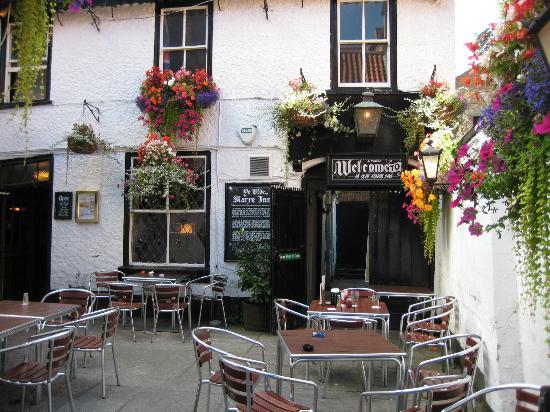
- 17th Century Origins: The pub dates back to 1644, making it one of the oldest licensed premises in York. It has been serving customers for nearly four centuries.
- English Civil War: The inn was established during the English Civil War and is believed to have served as a hospital for wounded soldiers. Its cellars were reportedly used to store bodies and supplies during the conflict.
- Historic Features: The building retains many of its original features, including timber beams and traditional pub decor. The sign hanging over Stonegate, the street where it is located, is one of its most recognizable features.
- Haunted Reputation: Like many old establishments in York, Ye Olde Starre Inne is reputed to be haunted.
What to Do at Ye Olde Starre Inne in 2024
- Enjoy Traditional Pub Fare: Visit the pub to enjoy a meal or drink in a historic setting. The menu features traditional British dishes and a selection of local ales and spirits.
- Explore York’s Historic Sites: Use Ye Olde Starre Inne as a base to explore the historic city of York. Nearby attractions include York Minster, the Shambles, and Clifford’s Tower.
- Ghost Tours: Join one of the many ghost tours that operate in York. These tours often include a stop at Ye Olde Starre Inne and provide insights into the city’s haunted history.
- York City Walls: Take a walk along York’s ancient city walls, which offer panoramic views of the city and a unique perspective on its historical layout.
- York Castle Museum: Visit the York Castle Museum to learn more about the city’s rich history, from its medieval origins to its Victorian past.
- Shopping in Stonegate: Explore the shops and boutiques on Stonegate, one of York’s most famous streets. It’s a great place to find unique gifts and souvenirs.
- Attend Local Events: Check for local events and festivals taking place in York during your visit. Events such as the York Food and Drink Festival and the Viking Festival offer a taste of local culture and history.
- Photography: Capture the historic charm of Ye Olde Starre Inne and the surrounding streets. The pub’s traditional architecture and the picturesque setting of York provide excellent photo opportunities.
- Relax and Unwind: Simply enjoy the atmosphere of this historic pub. Sit by the fireplace, appreciate the historic surroundings, and soak in the centuries of history that have unfolded within its walls.
Ye Olde Starre Inne offers a blend of historic charm, traditional hospitality, and a prime location in the heart of York, making it a must-visit destination in 2024.

